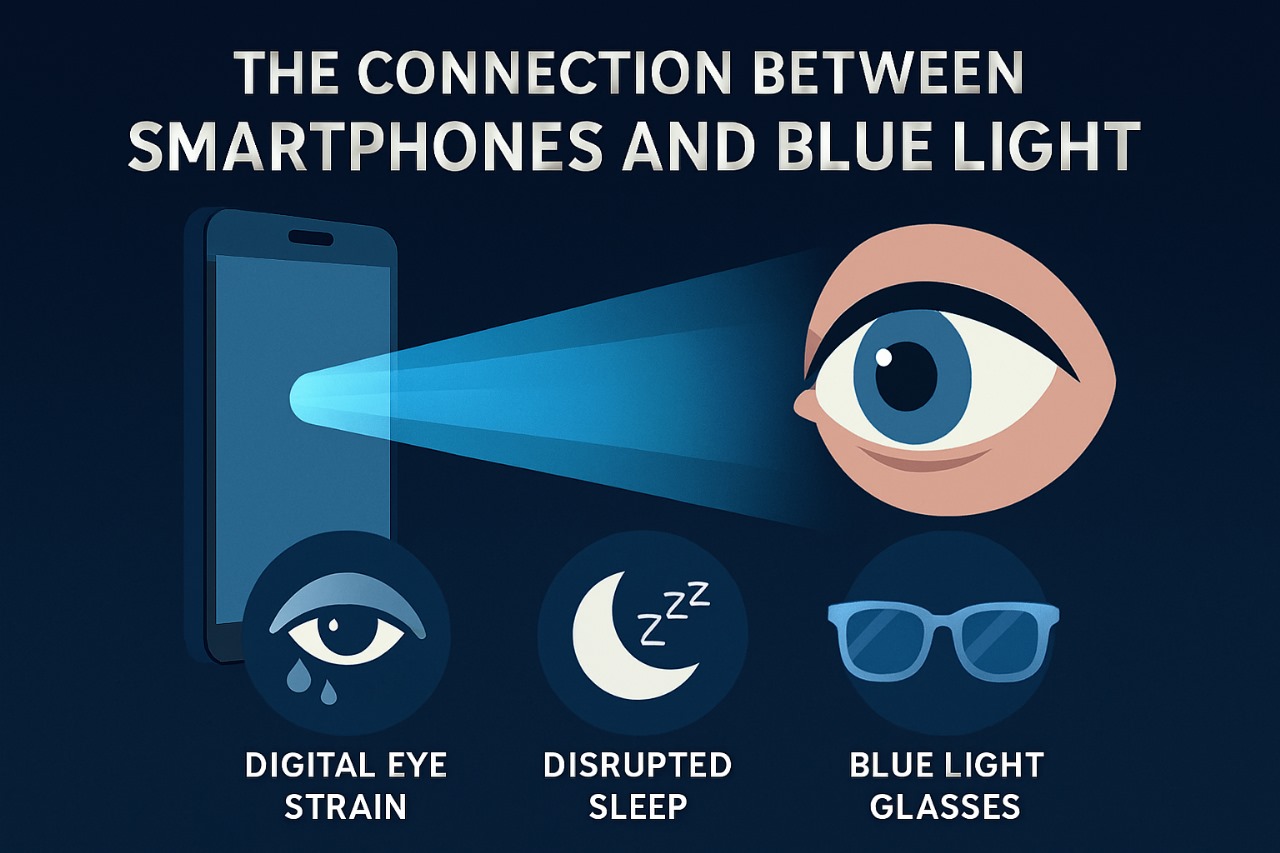The One Thing Every Smartphone User Should Know About Eye Health
How many hours do you spend staring at your phone each day? Chances are, it’s more than you realize. In today’s fast-paced digital world, smartphones have become an inseparable part of our lives from morning alarms to late-night scrolling. However, there’s a silent price our eyes are paying for this convenience. The One Thing Every Smartphone User Should Know About Eye Health is how constant screen exposure can affect vision and what simple step can protect it for life.
At Arora Eye Care Center, led by Dr. Ruchika, we’ve seen a growing number of patients suffering from eye strain, headaches, and blurred vision due to excessive screen use. Understanding this issue is the first step toward protecting your eyesight.
The Growing Problem: Digital Eye Strain
The overuse of digital devices has given rise to a modern-day condition known as Digital Eye Strain (DES) or Computer Vision Syndrome. It occurs when your eyes are exposed to screens for long hours without adequate rest. According to recent studies, an average adult spends more than 7 hours per day in front of a digital screen.
Common symptoms include dryness, irritation, blurred vision, headaches, and even neck or shoulder pain. Many people don’t even realize that these symptoms are caused by prolonged smartphone use. Eye Doctor in Thane experts emphasize that ignoring these signs can lead to chronic discomfort and potential vision problems later in life.
Imagine feeling eye fatigue just after scrolling social media or watching a video — that’s your body signaling it needs a break.
The Science Behind Eye Strain
What exactly happens inside your eyes when you stare at a screen for hours? The answer lies in blue light exposure and prolonged near focusing.
Smartphone screens emit blue light, a high-energy visible light that reaches deep into the eyes. Prolonged exposure may cause strain, disrupt sleep patterns, and even contribute to retinal stress. Additionally, when we focus on close-up screens, our blinking rate drops by up to 60%, leading to dryness and irritation.
Eye Specialist in Thane Dr. Ruchika, explains that this constant focus exhausts the small muscles around the eyes and interferes with the natural tear film, making the eyes feel dry and tired. Over time, if left unmanaged, this can lead to long-term vision issues and discomfort.
The One Thing Every Smartphone User Should Know
Here’s the truth: Your eyes are not designed for endless screen focus. The one thing every smartphone user should know is to give their eyes regular breaks and conscious care.
A simple and scientifically proven method to do this is the 20-20-20 Rule:
Every 20 minutes, look at something 20 feet away for at least 20 seconds.
This easy habit helps relax the eye muscles, improve blinking, and maintain moisture on the eye surface. It’s a small step that can make a big difference. Research from ophthalmology experts shows that people who follow this rule experience less eye fatigue and better focus throughout the day.
For those spending long hours on smartphones, computers, or tablets — incorporating this rule into your daily routine is the best natural defense for your vision.

Additional Tips for Healthier Eyes
Besides the 20-20-20 rule, there are several ways to keep your eyes healthy while using digital devices:
- Adjust screen brightness and contrast to match your environment.
- Maintain a distance of at least 16–18 inches from your phone screen.
- Use blue light filters or “night mode” to reduce exposure.
- Blink more often to prevent dryness.
- Stay hydrated, as dehydration can worsen dryness.
- Get regular eye check-ups to monitor any changes early.
If you experience persistent eye irritation, blurred vision, or fatigue, don’t ignore it. Visit the best eye doctor in Thane for a professional evaluation. Timely treatment not only restores comfort but also helps prevent long-term vision issues.
For specialized cataract evaluation or advanced treatments, you can check out Cataract Surgeon In Thane at Arora Eye Care Center, where personalized care meets modern technology.

The Connection Between Smartphones and Blue Light
Smartphones emit blue light that affects not only the eyes but also sleep patterns and mental focus. When blue light enters the eye, it passes through the cornea and lens, reaching the retina the light-sensitive layer at the back of your eye. Over time, overexposure may contribute to digital fatigue and, in rare cases, macular stress.
Using blue light–filter glasses or screen protectors can significantly reduce strain. Many people who adopted these simple changes reported better sleep quality and less dryness.
If you’re searching for a trusted Doctor of eye in Thane Dr. Ruchika at Arora Eye Care Center is known for personalized guidance and thorough eye health assessments.
Availability and Accessibility
Taking small steps today ensures your vision stays clear tomorrow. Regular breaks, proper lighting, and professional check-ups go a long way in preventing major eye disorders.
Consistent care leads to:
- Improved focus and productivity at work or study.
- Reduced fatigue, making screen use more comfortable.
- Lower risk of developing severe eye conditions in the future.
At Arora Eye Care Center, our mission is to promote proactive eye health through awareness and modern treatment. Whether it’s digital strain, cataract, or general vision correction — early intervention is always the key.
For more local guidance, explore Cataract specialist in Thane and learn how comprehensive care can protect your vision for life.
Conclusion
In a world where screens dominate every aspect of life, protecting your eyes is no longer optional, it’s essential. Remember, the one thing every smartphone user should know about eye health is that your eyes need regular rest and care. The 20-20-20 rule is simple, effective, and backed by science.
Small habits lead to long-lasting vision. Take breaks, blink often, and schedule regular check-ups with trusted professionals like Dr. Ruchika at Arora Eye Care Center in Thane.Because at the end of the day your smartphone can wait, but your eyes can’t.
